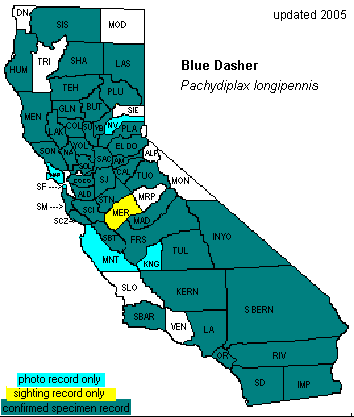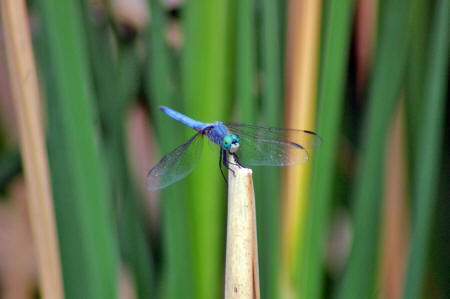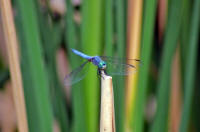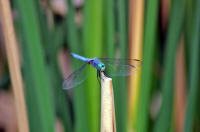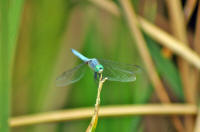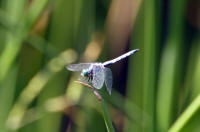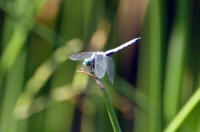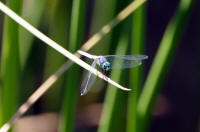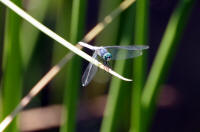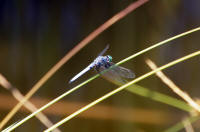|
|
|
Taxonomic Hierarchy |
|
Kingdom: |
Animalia -- animal |
|
Phylum: |
Arthropoda -- arthropods |
|
Class: |
hexapoda -- insects |
|
Subclass: |
Pterygota -- iwinged insects |
|
Infraclass: |
Palaeoptera-- wing insects |
|
Superorder: |
Odonatoptera -- ancient winged insects |
|
Order: |
Odonata -- Dragonflies and Damselflies |
|
Suborder: |
Anisoptera -- Dragonflies |
|
Family: |
Libellulidae -- Skimmers |
|
Genus: |
Pachydiplax |
|
Species: |
Pachydiplax longipennis |
|
|
Description: |
|
Diet: |
|
Naiad-This
is a relatively small naiad with a length of 3/4 to 7/8 inch
(18 to 21 mm). It is brownish above and bright green
underneath. There is a single, rear-facing spine on each
side of abdominal segments eight and nine, with those on
segment nine being noticeably longer. There are no hooks on
the back, as some naiads have. |
|
Naiad-Naiads
feed on a wide variety of aquatic insects, such as mosquito
larvae, other aquatic fly larvae, mayfly larvae, and
freshwater shrimp. They will also eat small fish and
tadpoles. |
|
Adult-Male:
pruinose blue, developing dark tip, tan under segments 1-3;
distinctive white face with black between the eyes; striped
thorax can become all blue; teal green/blue eyes; wings can
show brown tinted areas
Adult-Female:
rectangular buff marks
on dark background; no other is like it; white face |
Adult-The dragonfly
will eat almost any soft-bodied flying insect including
mosquitoes, flies, butterflies, moths, mayflies, and flying
ants or termites. |
|
Size: |
|
|
size: medium length 32 - 42 mm, wingspan 50 - 60 mm |
|
Range Information: |
|
Habitat: |
|
This
species is found from southern British Columbia east to
Ontario, extending south through the U.S. from southern
California east to Florida. It also occurs in the Bahamas.
In Idaho, it can be found throughout the state at lower
elevations, usually below 3000 feet (914 meters). |
|
This
dragonfly occurs near warm water ponds, warm, slow streams,
and hot springs. In the northern part of its range, it
almost always occurs near hot springs. Specifically in
Idaho, it occurs in low elevation desert in the southwest,
and at hot springs in the central and southeast portions of
the state. |
|
U. S.
Flight
Season: |
|
California Flight Period: |
|
Late
June to October |
|
March - November |
|
Ecology: |
|
Reproduction: |
|
The
naiads live in submerged vegetation. They do not actively
pursue prey but wait for it to pass by, a strategy which
affords them protection from other predators. The naiads of
this species can tolerate water with low oxygen content.
This is used by biologists in Florida who interpret their
presence as a possible indicator of low water quality.
Naiads emerge as adults at night. Adults generally fly from
late June to October. Hunting occurs from perches on twigs
and rocks. This is the only member of this genus. |
|
After
males and females mate, the female flies singly, without the
male attached, to lay her eggs by dipping the tip of her
abdomen in the water while hovering above its surface. |
|
Conservation: |
|
Sources : |
|
G1
G2
G3
G4
G5 |
|



|
|
G5 -
Populations are widespread, abundant, and secure.
|
|
